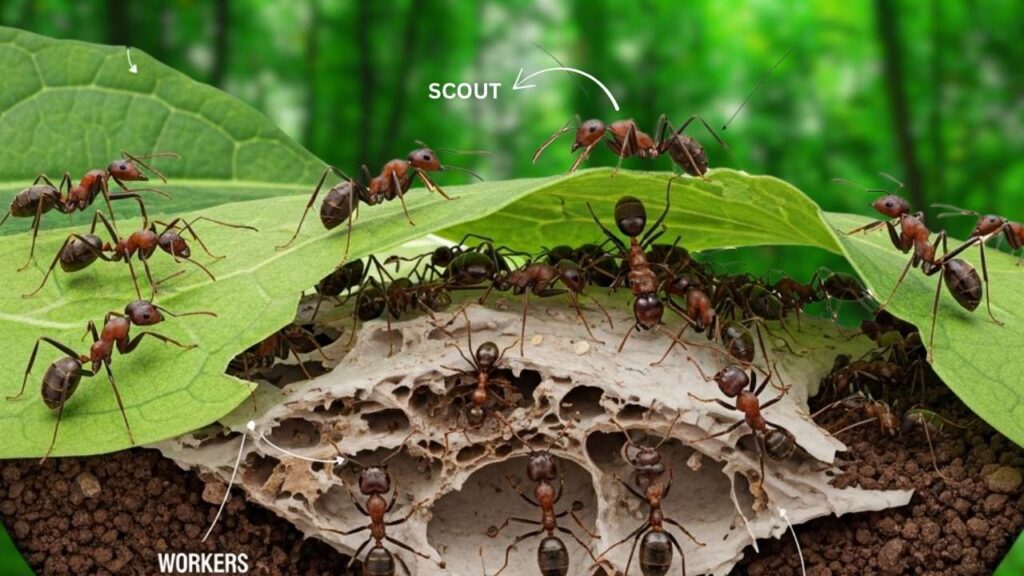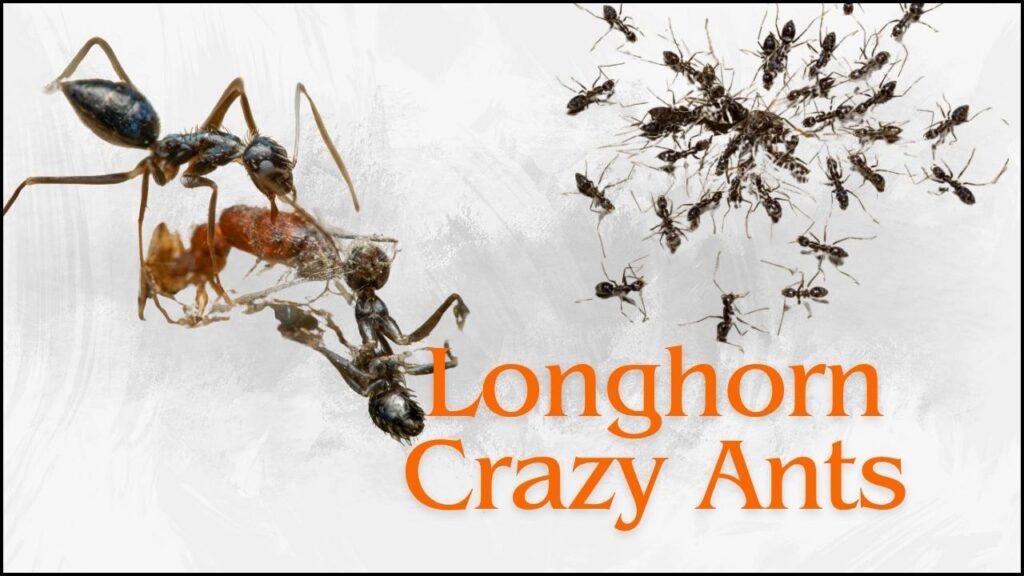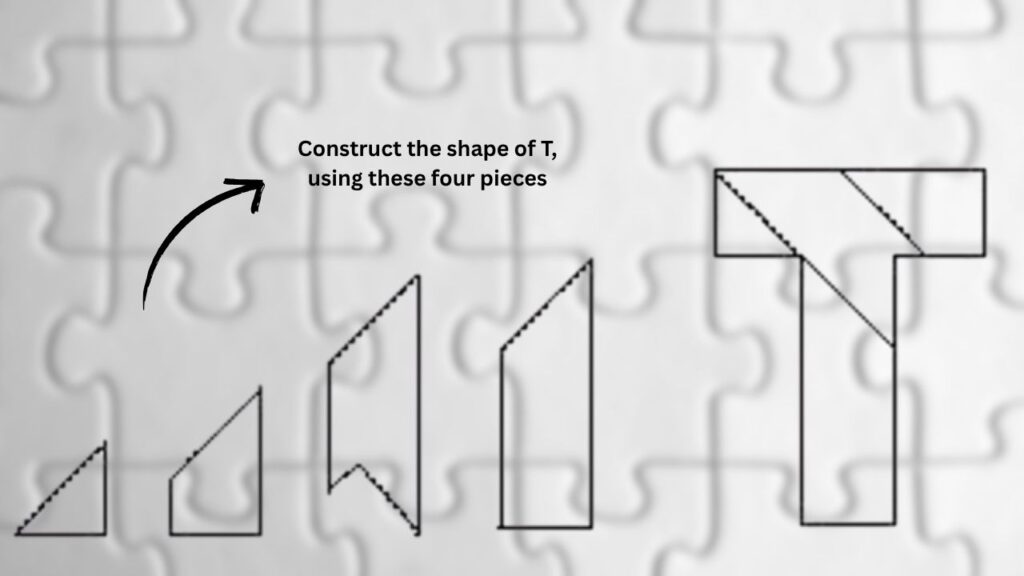Swarm Intelligence in Crazy Ants Offers Insights for Robotics: Swarm intelligence in crazy ants offers a remarkable window into the power of collective problem-solving—and it’s transforming the way scientists and engineers approach robotics.

Recent studies have shown that the longhorn crazy ant (Paratrechina longicornis), a tiny insect with a brain the size of a poppy seed, can perform feats of group intelligence that rival and sometimes surpass human teams. By understanding how these ants work together to solve complex problems, experts are developing new ways to build smarter, more adaptable robot swarms for real-world challenges.
Swarm Intelligence in Crazy Ants Offers Insights for Robotics
| Aspect | Details |
|---|---|
| Species Studied | Longhorn crazy ant (Paratrechina longicornis) |
| Main Discovery | Ants clear obstacles in advance, showing anticipatory swarm intelligence |
| Ant Brain Power | 0.25–1 million neurons per ant; humans have 86 billion |
| Collective Problem-Solving | Large ant groups outperform humans in group tasks with limited communication |
| Robotics Applications | Swarm robotics, decentralized control, optimization algorithms |
Swarm intelligence in crazy ants is more than a scientific curiosity—it’s a roadmap for the future of robotics and collaborative problem-solving. By studying how these tiny insects work together, scientists and engineers are building smarter, more adaptable robots that can tackle everything from disaster recovery to sustainable farming. The lessons from crazy ants remind us that sometimes, the smartest solutions come from the collective wisdom of the group, not just the brilliance of individuals.
What Is Swarm Intelligence?
Swarm intelligence describes how simple creatures, like ants or bees, work together to solve big problems—without a leader.

Each member follows straightforward rules, but together, they can build bridges, find food, or even farm fungus. This collective behavior is emergent, meaning it arises from the interactions of many individuals, not from a single mastermind.
Why Are Crazy Ants Special?
Longhorn crazy ants are known for their erratic, zigzag movements. But their real superpower is hidden: they cooperate in ways that seem almost magical. When faced with a challenge, like moving a large piece of food through a cluttered path, these ants not only communicate and coordinate—they even clear obstacles before they become a problem.

This anticipatory behavior is rare in the animal kingdom and has never before been documented in ants during cooperative transport.
How Do Crazy Ants Solve Problems Together?
The Science Behind the Swarm
Researchers from Israel and Switzerland observed a supercolony of longhorn crazy ants and witnessed something astonishing: as teams of ants carried food back to their nest, other ants would anticipate the route and remove small pebbles or obstacles ahead of time. This level of planning seemed impossible for an individual ant, whose brain is minuscule compared to a human’s. Yet, through collective action, the ants acted as if they had a group “brain” capable of advanced planning.
“Here we show for the first time that workers of the longhorn crazy ant can clear obstacles from a path before they become a problem—anticipating where a large food item will need to go and preparing the way in advance.”
— Dr. Ehud Fonio, Weizmann Institute of Science
How Do They Communicate?
Crazy ants use chemical signals called pheromones. When they find food, they touch their abdomens to the ground every 0.2 seconds, leaving a trail for others to follow. These trails help the colony coordinate movements and decisions, ensuring that everyone is on the same page—even if no one ant knows the whole plan.
Ants vs. Humans: The Collective Intelligence Challenge
The T-Shaped Puzzle Experiment
To test the limits of ant intelligence, scientists created a puzzle: move a T-shaped object through a series of narrow doors. Both ants and humans were challenged with scaled versions of the puzzle. For ants, the T-shaped load was 3D printed; for humans, it was built with metal grids and tarps.

Key Findings
- Ants in Large Groups: Groups of 80 ants solved the puzzle about 80% of the time, far outperforming individuals or small groups.
- Humans in Groups: When humans couldn’t talk or gesture, their group performance dropped—sometimes even below that of individuals. Groups with full communication did better, but still took longer to reach decisions.
- Ants’ Secret Sauce: Ants rely on constant physical interaction and short-term memory, creating an “emergent collective memory” that guides the group.
What Does This Mean?
Ants excel in situations where communication is limited and the problem requires persistent, coordinated effort. Humans, on the other hand, rely on advanced reasoning and communication. When those are restricted, our group efficiency drops—challenging the idea of the “wisdom of crowds”.
The Science: How Swarm Intelligence Emerges
Step-by-Step Guide to Ant Swarm Intelligence
- Simple Rules: Each ant follows basic instructions—like “if you see an obstacle, remove it,” or “follow the strongest pheromone trail”.
- Local Sensing: Ants use their antennae to sense chemicals and touch. They don’t need to know the whole plan—just what’s happening nearby.
- Emergent Behavior: When many ants follow simple rules, complex group actions emerge—like building bridges or clearing paths.
- Feedback Loops: The group adapts in real time. If a path is blocked, some ants clear it while others find new routes.
- Decentralized Control: There’s no leader. The colony’s intelligence comes from the sum of its interactions.
From Ants to Robots: Swarm Intelligence in Robotics
Why Do Engineers Study Ants?
Robotics engineers want to build machines that are:
- Resilient: Able to keep working even if some robots fail.
- Flexible: Able to adapt to changing environments.
- Efficient: Able to solve big problems by dividing the work.
Ants provide a blueprint for all these qualities.
Swarm Robotics: Real-World Examples
- Obstacle Clearing: Robot swarms can be programmed to anticipate and remove barriers, just like crazy ants.
- Path Optimization: Algorithms inspired by ant foraging—such as Ant Colony Optimization (ACO)—help robots and delivery systems find the shortest routes.
- Cooperative Tasks: Swarms of robots can move large objects, build structures, or explore disaster zones, mimicking ant teamwork.
Case Study: Warehouse Robots
Modern warehouses use fleets of robots that coordinate using swarm principles. They avoid traffic jams, optimize delivery routes, and recover quickly from individual breakdowns—just like an ant colony.
Case Study: Search and Rescue
In disaster zones, robot swarms can spread out, find survivors, and clear debris—tasks that would be too dangerous or difficult for humans alone.
Practical Advice: Applying Swarm Intelligence
For Robotics Professionals
- Design Simple Rules: Start with basic behaviors for each robot—navigation, obstacle removal, and communication.
- Use Local Sensing: Equip robots with sensors to detect their immediate environment, not just global maps.
- Encourage Interaction: Allow robots to share information indirectly, through environmental cues or short-range signals.
- Test in Groups: Swarm behaviors often emerge only when many robots interact—so test at scale.
For Team Leaders and Educators
- Foster Decentralized Decision-Making: Encourage teams to solve problems collectively, especially when communication is limited.
- Learn from Failure: Swarm systems are robust because they adapt to setbacks—embrace trial and error.
- Use Analogies: Teaching with ant-inspired stories can make complex ideas approachable for all ages.
Intelligent Sensors Reduce Energy Use in Industrial Settings
Experts Warn Quantum Cryptography May Not Be Fully Secure Yet
Neural Networks Improve Efficiency of Solid-State Battery Research
FAQs About Swarm Intelligence in Crazy Ants Offers Insights for Robotics
Q: What is swarm intelligence?
A: Swarm intelligence is the collective behavior of decentralized, self-organized systems—like ant colonies or robot swarms—where simple agents work together to solve complex problems.
Q: Why are crazy ants important for robotics?
A: Crazy ants display advanced group problem-solving, such as clearing obstacles in advance. This inspires engineers to design robots that cooperate and adapt efficiently.
Q: How do robots use swarm intelligence?
A: Robots use algorithms inspired by ants to find paths, clear obstacles, and divide tasks without a central controller.
Q: Are ant-inspired robots used in real life?
A: Yes! Swarm robotics is used in warehouses, agriculture, search and rescue, and environmental monitoring.
Q: Can humans learn from ant teamwork?
A: Absolutely. Studies show that, in some situations, ant groups outperform humans—especially when communication is limited. This teaches us about the value of decentralized teamwork.






